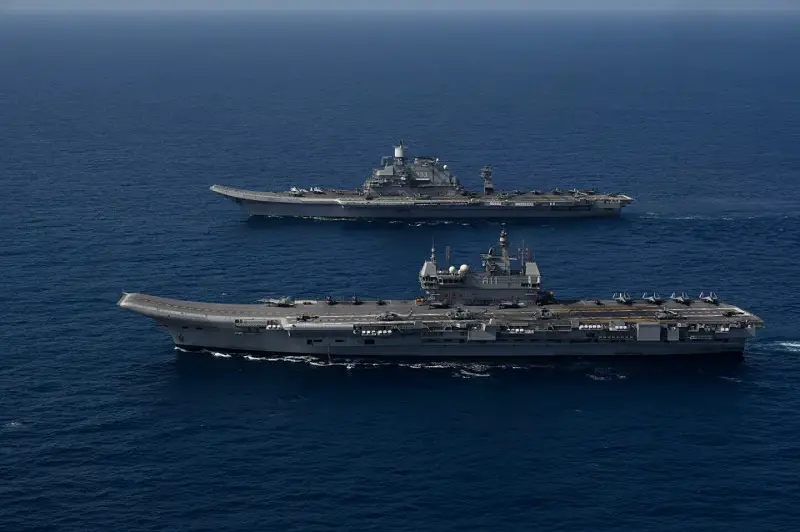The Indian Navy showcased its formidable maritime capabilities with a spectacular display of multi-carrier operations and the coordinated deployment of more than 35 aircraft in the Arabian Sea. This demonstration of naval prowess underscores India’s commitment to safeguarding its national interests, maintaining regional stability, and fostering cooperative partnerships in the maritime domain. INS Vikramaditya and INS Vikrant, centre-pieces of the exercise, serve as ‘floating sovereign airfields’, providing a launch platform for a wide array of aircraft, including MiG-29K fighter jets, MH60R, Kamov, Sea King, Chetak and ALH helicopters. These mobile bases can be positioned anywhere, allowing for increased mission flexibility, timely response to emerging threats and sustained air operations to safeguard our national interests across the globe.
It also marks a significant milestone in Indian Navy’s pursuit of enhancing maritime security and power-projection in the Indian Ocean, and beyond. The exercise involved seamless integration of two Aircraft Carriers INS Vikramaditya and the indigenously built INS Vikrant- along with a diverse fleet of ships, submarines and aircraft, showcasing India’s technological expertise in the maritime domain. In addition, they provide our friends with an assurance that the Indian Navy is capable and ready to support our ‘collective’ security needs in the Region. The successful demonstration of two-carrier battle group operations serves as a powerful testament to the pivotal role of sea-based air power in maintaining maritime superiority. As India continues to strengthen its security apparatus, significance of Aircraft Carriers will remain paramount in shaping the nation’s defence strategy and promoting regional stability.

INS Vikramaditya (Sanskrit: ‘Brave as the Sun’) is a modified Kiev-class aircraft carrier and the flagship of the Indian Navy. She entered into service in 2013. Originally built as Baku and commissioned in 1987, the carrier served with the Soviet Navy and later with the Russian Navy (as Admiral Gorshkov) before being decommissioned in 1996. The carrier was invested by India on 20 January 2004 after years of negotiations at a final arms sales price of $2.35 billion. The transformed ship completed her sea trials in July 2013[24] and first STOBAR aviation trials in September 2013. She was commissioned on 16 November 2013 at a ceremony held at Severodvinsk, Russia. On 14 June 2014, the Prime Minister of India, Narendra Modi, formally inducted INS Vikramaditya into the Indian Navy and dedicated her to the nation.
INS Vikrant (Sanskrit: ‘Courageous’) is an aircraft carrier in service with Indian Navy. The carrier is the first to be built in India and was constructed by the Cochin Shipyard Limited (CSL) in Kerala. The namesake Vikrant is a tribute to India’s first aircraft carrier INS Vikrant (1961). Vikrant’s air group can consist up to 26 MiG-29K, Rafale M or F-18E/F fighters and up to 4 Kamov Ka-31, or 2 HAL Dhruv NUH or 4 MH-60R helicopters It is 262-metre (860 ft) in length, with a top speed of 28 knots (52 km/h; 32 mph), and endurance of 7,500 nautical miles (13,900 km; 8,600 mi). The ship has 2,300 compartments manned by 1,700 seamen. It has a hospital complex, cabins for female officers, two football field-sized flight decks, eight kilometres (5.0 mi) of corridors, and eight generators capable of lighting up a city of 2 million people.














